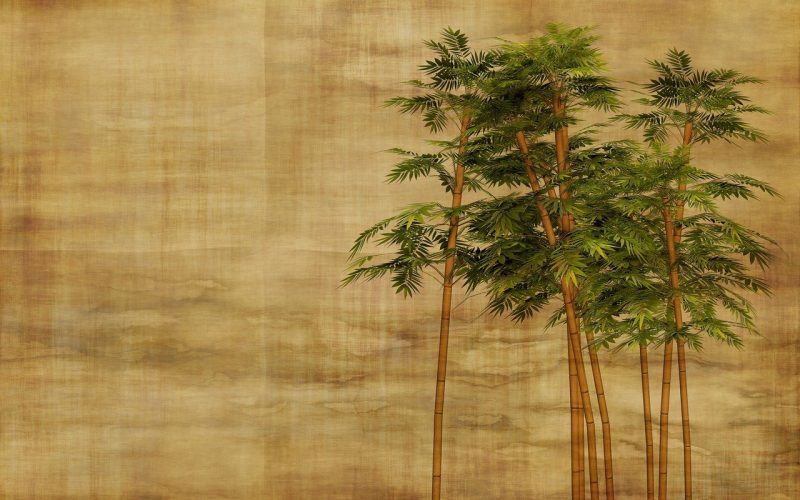Bamboo is a high, exquisite, and magnificent plant that has been raised for several millennia.
There are different types of bamboo house plants that are ideal for this role.
Sadly, inexperienced gardeners frequently misunderstand bamboo and often cringe at the thought of planting them at home.
Yet, given how simple it is to cultivate and maintain bamboo, especially the clumping varieties, this shouldn’t be the case.
Many species of this plant can become invasive if they are not properly controlled, but if the rules are followed, one can still manage it successfully.
Bamboo can be cultivated indoors, despite the fact that it is not often thought of as an interior plant.
There are different types of bamboo house plants, and in this blog post, you will be getting necessary information on them.
1. Arrow Bamboo
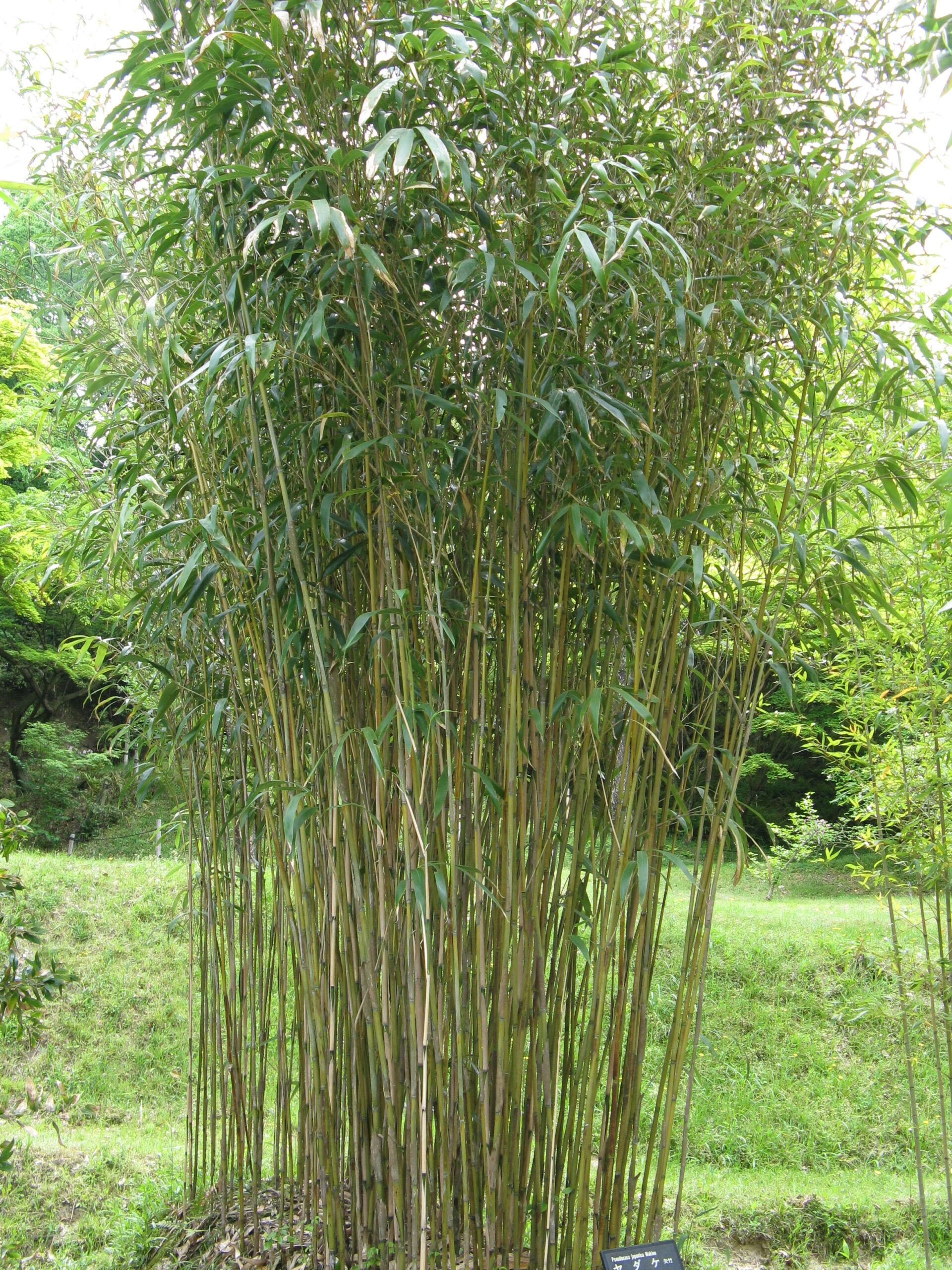
The arrow bamboo plant, Pseudosasa japonica, is native to Japan and Korea.
With nearly 10-inch-long leaves, this variety of gleaming green bamboo may reach heights of 20 feet.
Among the different types of Bamboo house plants, we have the arrow bamboo plant.
This bamboo was called arrow bamboo because it was highly prized and utilized in the production of arrows.
This particular bamboo kind may survive in either full sun or shade, but it does so better in the latter.
2. Black Bamboo
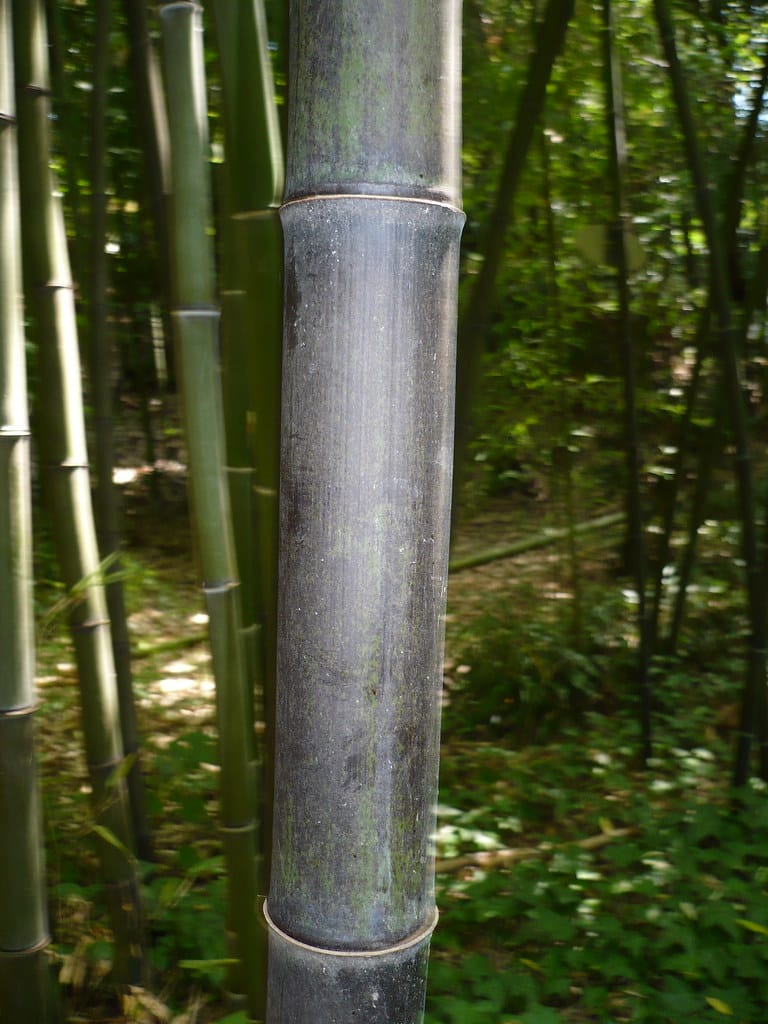
Black Bamboo is one of the different types of bamboo house plants.
Although it is now planted all over the world, black bamboo, or Phyllostachys nigra, has its origins in Hunan, China.
Natural black bamboo can reach heights of up to 80 feet and has lance-shaped leaves ranging from 2 to 5 inches.
For the first two or three seasons, the canes are green. After that, they become black and stay that way for their lives.
The ability of black bamboo to withstand temperatures as low as 0°F sets it apart from other species.
3. Chilean Bamboo

The evergreen variety of bamboo, known as chusquea culeou, or Chilean bamboo, is a product of South America.
The fact that Chilean bamboo can withstand frost, unlike most bamboo species, is one of its most distinctive features.
The plant has narrow leaves that can grow up to a few inches long and can reach heights of up to 26 feet.
Chilean Bamboo is known among the different types of Bamboo house plants.
4. Dwarf Green Stripe Bamboo
Dwarf green stripe bamboo, also known as Pleioblastus viridistriatus, is a well-liked bamboo type for indoor cultivation that is native to Japan.
Although dwarf green striped bamboo can reach a maximum height of 4 feet, it usually tops out at about 30 inches when cultivated inside.
The bright morning sun and/or sun for up to half of the day is preferred by this variety of bamboo.
The fact that dwarf green striped bamboo can withstand temperatures as low as -10°F makes it almost freeze resistant.
House plants are not complete without dwarf green stripe bamboo; among the different types of bamboo house plants, we have dwarf green stripe bamboo.
5. Fargesia Bamboo
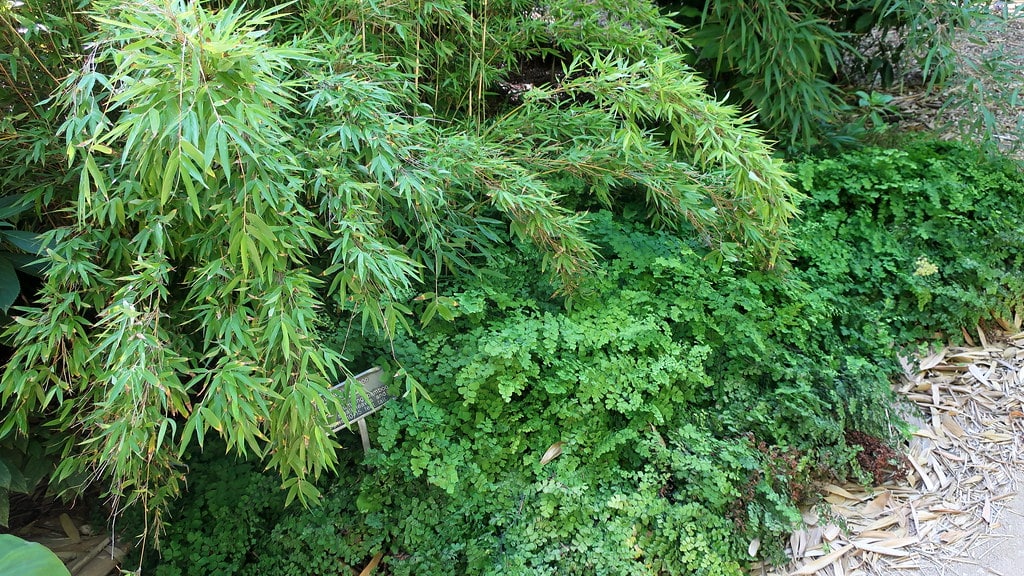
Among the different types of bamboo house plants commonly embraced worldwide, we have the fargesia bamboo.
These bamboo species make excellent indoor plants and are most frequently grown for decorative purposes.
Today, more than 80 subspecies of Fargesia bamboo are grown all over the world.
When you are looking for the best type of indoor plant, then with Fargesia bamboo, you are on the right path.
6. Guadua Bamboo
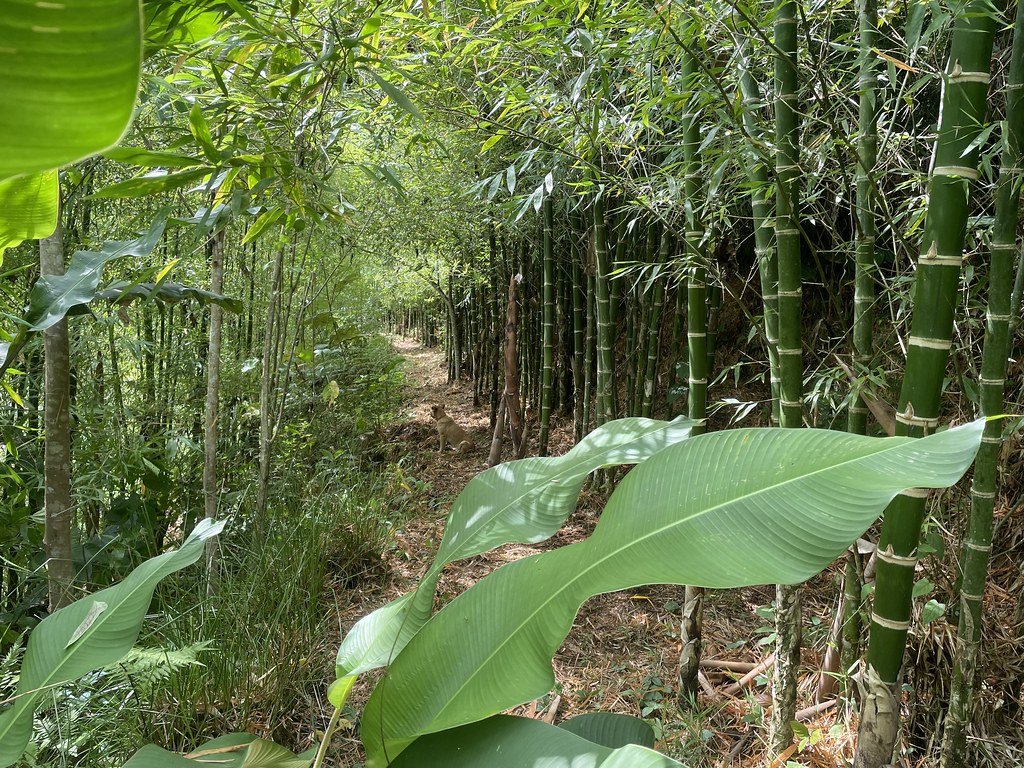
The bamboo genus Guadua is native to Mexico, Uruguay, and the surrounding region. It is regarded as a species of neotropical bamboo.
Guadua bamboo is used to construct dwellings in rural areas of Columbia and Ecuador.
Guadua bamboo grows at a rate of several centimeters per day and can grow as tall as 90 to 100 feet.
Among the different types of bamboo house plants, we have Guadua bamboo; with this plant, you are on the right track.
7. Hill Cane
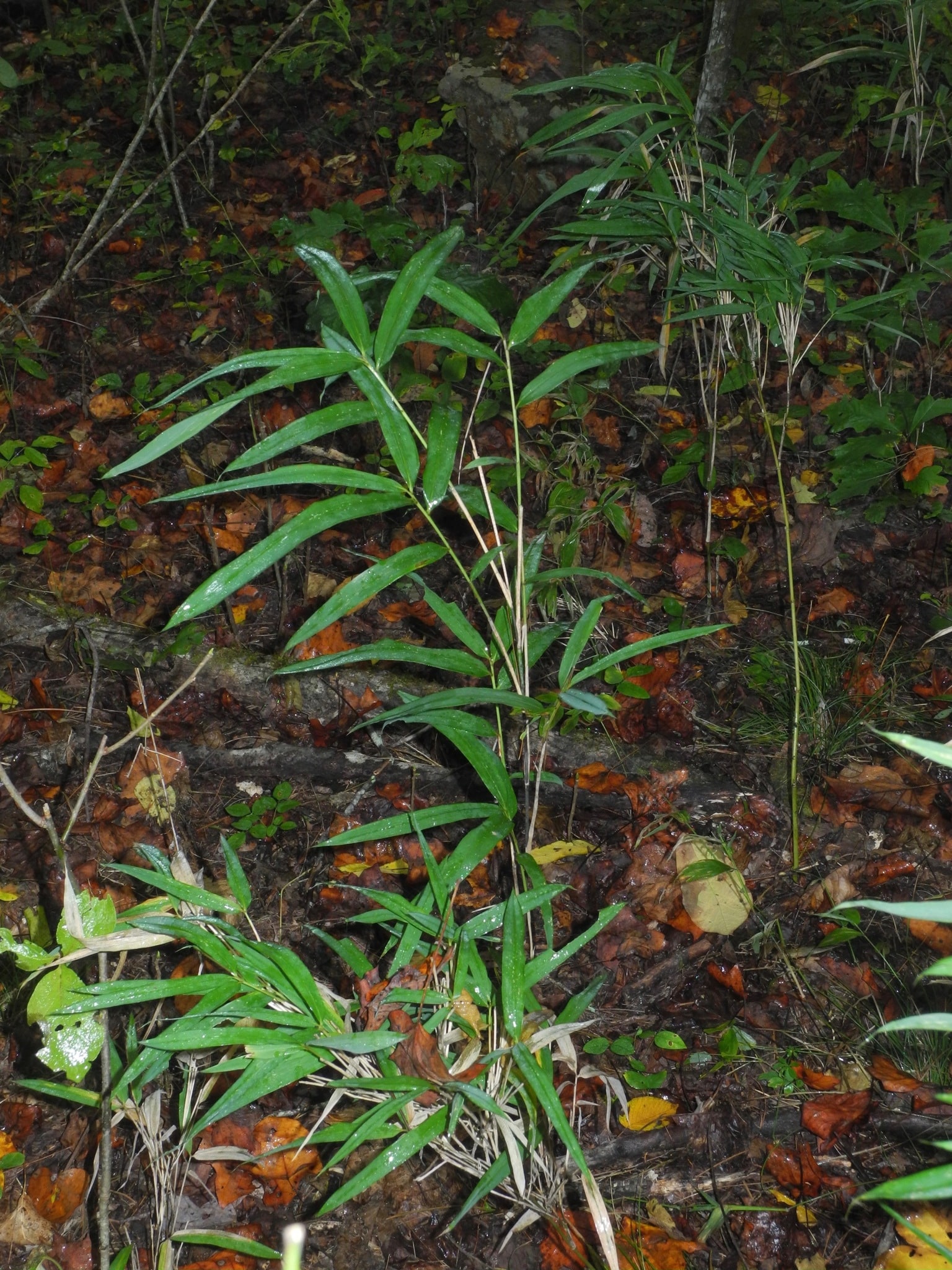
Hill cane, also known as Arundinaria appalachiana, is another variety of bamboo that is frequently grown inside.
This bamboo’s original home is in eastern North America’s Appalachian Mountains. The Hill Cane plant is one of the different types of bamboo house plants.
Hill cane bamboo is the ideal indoor plant because it doesn’t get much taller than 1.5 to 3 feet. It is the smallest and thinnest variety of bamboo known to man.
The hill cane bamboo’s leaves can grow to be between 3.5 and 9 inches long.
8. Oldham’s Bamboo

Another bamboo species found in North America is Bambusa oldhamii, also known as Oldham’s bamboo.
It is the largest tree in the US and can grow up to 65 feet tall.
Oldham’s bamboo has numerous long, slender leaves that can reach lengths of a few inches and can grow up to 4 inches thick (cane-wise).
This species is frequently confused with the well-known Chinese bamboo variety Bambusa atrovirens.
Oldham bamboo is one of the different types of bamboo house plants.
9. Umbrella Bamboo

If you’re seeking cute, non-invasive bamboo for your home, umbrella bamboo (Fargesia murielae) might be the best choice.
This bamboo is attractive, sturdy, completely non-invasive, and tolerant of any climate.
These bamboos have greenish-yellow canes, but their long, slender leaves are what set them apart.
In contrast to many bamboos, their leaf doesn’t require being snapped or stalked and has a delicate appearance with grayish-green undertones.
The majority of the clusters formed by umbrella bamboo stretch out to a width of 4 to 5 feet and grow quickly.
Although direct sunshine could affect the texture of the leaves, they appreciate some shade. The umbrella Bamboo is one of the different types of bamboo house plants.
10. Hedge Bamboo
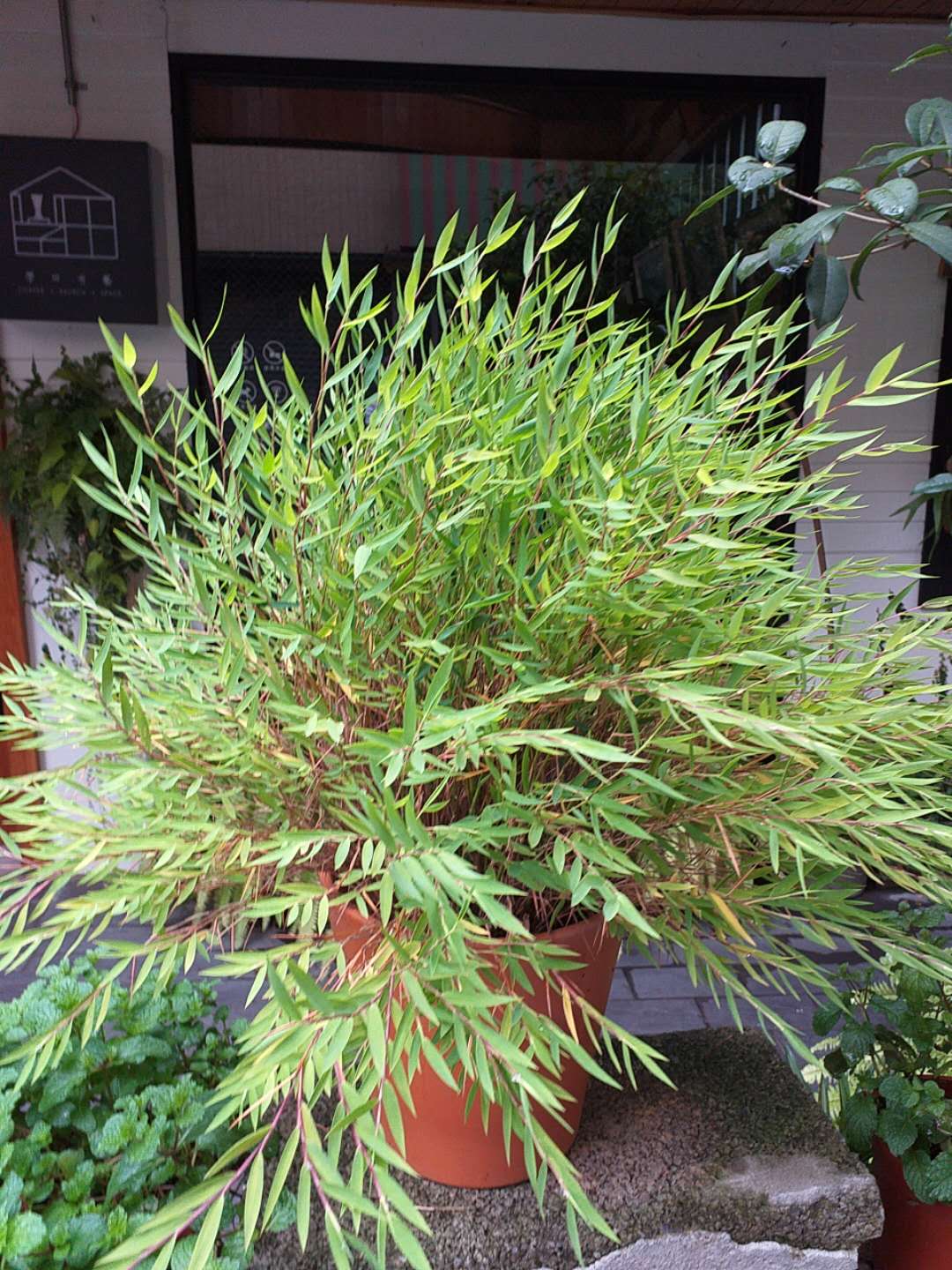
Hedges (Phyllostachys glauca) are stunning evergreens that are distinguished by their exquisite canes, the majority of which grow from vivid bluish-green culms.
The younger plants may benefit the most from this bluish tint, while the older plants lose this turquoise color, and the canes take on a yellowish-green appearance.
Hedge bamboos often grow vertically and have canes about two inches wide overall. Since warm weather encourages quick growth, they favor it.
Hedge Bamboo is one of our best choices of bamboo plants. If the temperature falls, the growth will immediately come to an end.
Hedge bamboos aren’t invasive, but they can slowly grow into a small bamboo orchard that is up to 20 feet wide.
11. Green-Glaucous Bamboo
In order to establish a grove, the Green Glaucous Bamboo (Phyllostachys viridiglaucescens) is known to grow very well and spread widely.
Because of their high quality, they function admirably as a living fence or a reliable privacy screen.
The Green Glaucous is well noted for its rich, emerald green canes that sprout from the ground.
They eventually mature into a yellowish-green color after taking on a lime-green tinge over time.
These bamboos have medium-sized, elongated leaves that are both wide and entirely striped, as well as white nodes and canes.
Among the different types of bamboo house plants, we have green glaucous bamboo.
12. Large Leaved Bamboo
This tiny plant, which is primarily found in China, is another evergreen species like the Golden Groove.
It will therefore maintain its green color all year if you keep it indoors with lots of shade and moist soil. Large-leaved Bamboo is one of the different types of bamboo house plants.
It is a resilient plant that can endure challenging conditions for an extended period of time, making it a simple bamboo plant to cultivate in your indoor garden.
It will eventually start to grow dense, green bamboo thickets if you keep it in a big pot.
13. Lucky Bamboo
While being advertised as “Lucky Bamboo,” this plant (Dracaena sanderiana) belongs to the Asparagaceae family.
Since it can only grow in water, our “Lucky Bamboo” resembles a water lily more than the other bamboo species.
This plant is in a tiny dish or glass vase surrounded at the base by a few tiny stones. Among the different types of bamboo house plants, we have lucky bamboo.
Believe it or not, “Lucky Bamboo” is said to balance out the feng shui of everyday life and bring luck to your home. Keep it going, then!
14. Giant Bamboo
The Giant Bamboo, also known as Dendrocalamus Giganteus, is a sizable species of tropical and subtropical clumping bamboo.
Evidently, one of the world’s largest bamboo species, the tree is endemic to Southeast Asia.
These bamboos are close-clumped, somewhat grayish-green in color, and may typically grow up to 30 meters (98 feet) tall.
It spreads swiftly and, given the right conditions, can grow up to 40 centimeters daily. The trees are frequently seen thriving along the river’s banks at higher altitudes.
Burma, Indonesia, Sri Lanka, Bangladesh, Thailand, and India are home to giant bamboo. These bamboo plants’ “culms” grow straight out and appear powdery or flaky.
After these are dried, the hue turns brownish-green, and the surface becomes smooth. Moreover, Giant Bamboo’s new shoots have a dark purple hue.
15. Giant Thorny Bamboo
Giant Thorny Bamboo is one of the different types of bamboo for house plants.
The Giant Thorny Bamboo, Spiny Bamboo, or Indian Thorny Bamboo are all common names for the Bamboosa Bambos.
It is widely distributed in the Indo-China region, Bangladesh, Sri Lanka, and India.
Moreover, the plant has become naturalized in Maluku, Java, Malaysia, the Philippines, and the West Indies.
Giant thorny bamboo is a kind of tall, spiky bamboo that grows in dense thickets. It is vivid green in color.
These thickets are made up of a lot of densely grouped, massively branching culms.
The plant normally grows in dry forest zones and can grow as high as 10-35 meters. The plant’s culms have thick, curving spines and do not grow in a straight line.
This type of bamboo needs extra care if it is considered an indoor plant.
Conclusion
Compared to standard houseplants, bamboo requires significantly larger and more durable containers. Bamboo pots must be stronger and bigger than other types of pots.
Leave plastic items alone; bamboo roots may penetrate almost everything. Bamboo should be grown inside metal and sturdy wood containers.




